#preventing complications of existing health conditions
Text
Understanding the Crucial Role of Regular Health Check-ups for Optimal Wellness
Regular health check-ups refer to the routine medical examinations or tests that are conducted to assess an individual’s overall health status. These check-ups are crucial as they help in early detection and prevention of potential health issues. They can include various tests such as blood tests, physical examinations, screenings, and consultations with doctors.
The importance of regular health…
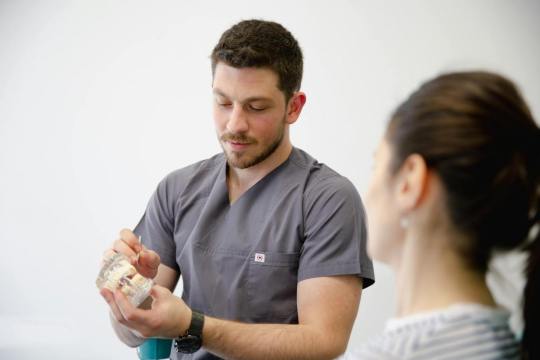
View On WordPress
#early detection of diseases#improving lifespan#keeping a check on body weight#maintaining a healthy lifestyle#managing stress#monitoring blood pressure#preventing complications of existing health conditions#prevention of illnesses#reducing healthcare costs#Regular monitoring of health#tracking progress of a treatment#updating vaccinations
0 notes
Text
Milgram Questions
Alright, I’m not dead, just tired but I do have a question that’s been bugging me for a while, and then a second question for Trial 3…
If we go back to the Milgram Timelines, there’s a conversation between Mahiru and Muu that’s been bugging me. I cannot, for the life of me, figure out where I saw this interpretation of the translation, but I do remember it. It was the July 13th 2020 timeline conversation and I can find it on the Milgram wiki but not the translator’s note I saw.
Note: contains speculation over injuries and potential character deaths and it was quite morbid
The translation I saw but cannot find said that the “it” that these two are talking about is their periods. Mahiru is assuring Muu that it might be the environment they’re in and its impact on their mental states causing them to miss their periods (stress can cause late or early or missing periods, I have had stress do all three to me).
If that translator’s note I thought I saw does exist somewhere that I just can’t find it, then now I’m curious if the supernatural side of Milgram is causing the female prisoners to stop their menstrual cycles, or if it’s just stress from being imprisoned causing them to miss theirs. I’m leaning towards the former, which brings me to my question.
If Milgram can prevent a biological cycle, could it also prevent a person from healing? I’m not trying to give Shidou an out, because I know the fandom is quite suspicious that Mahiru’s condition hasn’t improved at all and it really could be that Shidou’s established martyr complex is causing him to play God and sabotage her health to feel needed. But, now I’m curious if Milgram is somehow preventing Fuuta and Mahiru from healing from their wounds. I really have no basis for this theory, other than what may be a false memory and that time doesn’t seem to pass for inside Milgram. Are new cells just not forming and dead cells are not being broken down like they should be?
I am no doctor, but one of my major concerns is sepsis in Fuuta’s eye. It’s eye scream horror and it makes me shudder. The other is both Fuuta and Mahiru have spinal injuries, which makes me worry for their spinal cord and any complications that could arise from that. Neither one seems to be healing, but worsening mental health seems to be tied to Mahiru’s declining state rather than infection or complications.
Which leads me to my second question: if someone does die during the intermission between Trials 2 and 3, what happens to the body?
Like are the supernatural powers that be just going to disappear the body when everyone’s asleep? Or are they just going to leave the body there until the third trial is over?
I’m hoping it would be the first option, but Milgram is kind of a mind fuck to begin with, so I can picture the worst happening, in which that body is staying with the remaining prisoners until everything is done. If that happens, I don’t know which would be worse: if cells can’t die, then the dead look like they’re sleeping and could wake up at any moment, or if cells can die, the prisoners and Es having to deal with the resulting decaying of a corpse.
14 notes
·
View notes
Text
Death of Pirouz
Not-So-Fun Fact, given the context of this story: Pirouz (پیروز) is Persian for "victor" (or "victorious," depending on how it's used in a sentence).

Pirouz (the sweet little baby pictured above) was the last surviving Asiatic cheetah cub born in captivity in Iran, and he passed away on Tuesday due to kidney failure. Besides the fact that he [obviously] was a precious baby, everyone is angry and heartbroken by his passing, because he had become a symbol for the revolution. Shervin Hajipour had even alluded to him and the delicate nature of his existence in his GRAMMY-winning song "Baraye."
This reflects another dimension of the pain and suffering caused by the regime. With their blatant disregard for environmental issues and tendency to suppress environmental activists, it is not much of a surprise that this tragedy also took place. (And this isn't even taking into account the suspicions that they had a hand in his death.) While there is still a great deal that remains unknown, considering that one of his siblings also had died due to health complications, it's probable that he and his siblings were not bred in the best conditions. Furthermore, it's highly likely that limitations in resources prevented them from receiving the care that they needed, despite their caretakers' best efforts.
As for Pirouz himself, I'm absolutely heartbroken, and I cannot stop crying right now. Sadly, he is another victim of the regime. I just hope that his last moments weren't painful. From the perspective of the revolution, I hope that his death does not signify the death of potential victory for the revolution, considering the meaning of his name and his status as a symbol.
Now, let's fight for Pirouz in both senses of the word as used in this post: The poor baby himself and the pirouzi (پیروزی) (i.e., 'victory') of the revolution.
SOURCE:
#environmental justice#environmental issues#animal rights#animal welfare#free iran#freedom for iran#iran protests#iran revolution#iran revolution 2023#iran protests 2023#mahsa amini#woman life freedom#women life freedom#environment#social justice#social justice issues#nobody touch me right now#also where's the wwf? shouldn't they be speaking up about this stuff?
100 notes
·
View notes
Text

Groundbreaking Pig Heart Transplant is Performed for the Second Time
For the second time ever, a pig heart has been transplanted into a living human recipient, the University of Maryland Medical Center announced on Friday.
The groundbreaking surgery was done on September 20 at UMMC by the same transplant team that preformed the first such experimental surgery in 2022.
In a news release, the hospital said the recipient, 58-year-old Lawrence Faucette, “is currently breathing on his own, and his heart is functioning well without any assistance from supportive devices.”
Faucette had end-stage heart disease. He had pre-existing peripheral vascular disease and complications with internal bleeding making him ineligible for a traditional heart transplant, the hospital said in the release. He was admitted to UMMC on September 14 after experiencing symptoms of heart failure.
“My only real hope left is to go with the pig heart, the xenotransplant,” Faucette told the hospital in an internal interview several days before the surgery.
The experimental xenotransplant surgery was green lit under the US Food and Drug Administration’s “compassionate use” program. According to the FDA, the program is “a potential pathway for a patient with a serious or immediately life-threatening disease or condition to gain access to an investigational medical product (drug, biologic, or medical device) for treatment outside of clinical trials when no comparable or satisfactory alternative therapy options are available.”
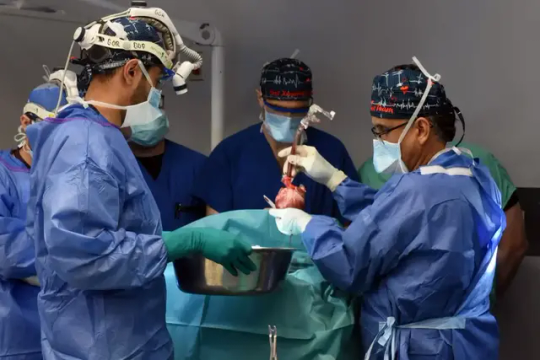

The pig heart used came from a genetically modified pig from Revivcor, a subsidiary the United Therapeutics Corporation. The pig had 10 genes edited, including three genes “knocked out” or inactivated to eliminate the alpha gal sugar in the pig’s blood cells, which can trigger a severe reaction in the human immune system, causing organ rejection. An additional pig gene was modified to control for the growth of the pig’s heart while 6 human genes were added into the pig’s genome to increase acceptance by the immune system. The FDA first approved the gene edited pigs in 2020 for potential therapeutic use and consumption.
Doctors are also treating Faucette with an experimental antibody treatment to further suppress the immune system and prevent rejection. He will be closely monitored for any signs of rejection or any development of pig related viruses. The donor pig was also closely screened for any signs of virus or pathogens.
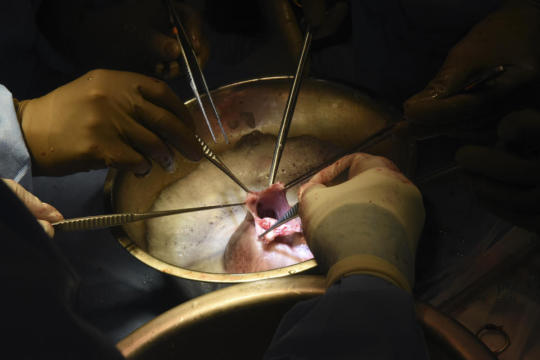
“We are once again offering a dying patient a shot at a longer life, and we are incredibly grateful to Mr. Faucette for his bravery and willingness to help advance our knowledge of this field,” said Dr. Bartley Griffith, in the release. Griffith is the surgeon who performed the transplant and is a professor of surgery at the University of Maryland School of Medicine.
The hospital said Faucette fully consented to the experimental treatment and was informed of all the risks. In addition, he underwent a full psychiatric evaluation and discussed his case with a medical ethicist.
According to the hospital’s news release, Faucette is a married father of two from Frederick, Maryland and a 20-year Navy veteran who had most recently worked as a lab technician at the National Institutes of Health before retiring.
“We have no expectations other than hoping for more time together,” said his wife Ann Faucette, in the release. “That could be as simple as sitting on the front porch and having coffee together.” There are currently no clinical trials that utilize pig organs for transplants in living human beings. The University of Maryland performed the first such experimental surgery on 57-year-old David Bennett in January 2022. Bennett died two months following the surgery.
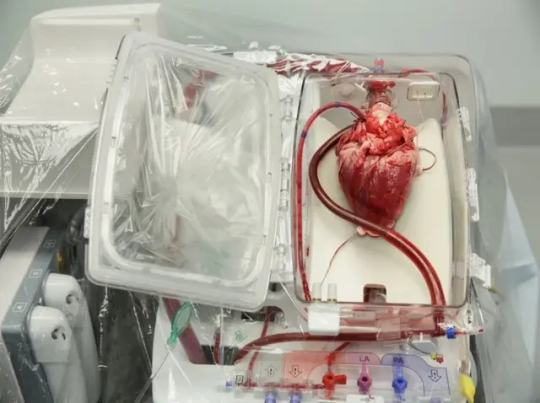
While there were no signs of rejection in the initial weeks following the transplant, an autopsy concluded that Bennett ultimately died of heart failure from “a complex array of factors,” including Bennett’s condition prior to the surgery. Bennet had already been hospitalized and kept on a heart lung bypass machine for 6 weeks prior to the transplant. However, a case study by the doctors published in the Lancet also noted there was evidence of pig virus that had not been identified previously.
According to the federal government, there are more than 113,000 people on the organ transplant list, including 3,354 people in need of a heart. The group Donate Life America says that 17 people die each day waiting for a donor organ.
By Nadia Kounang,

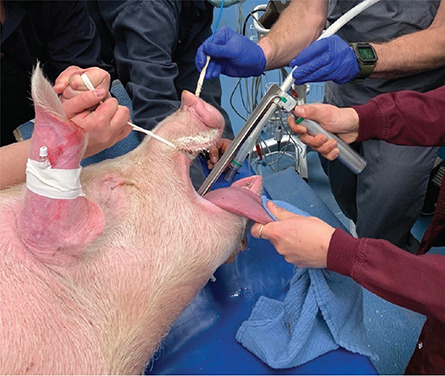
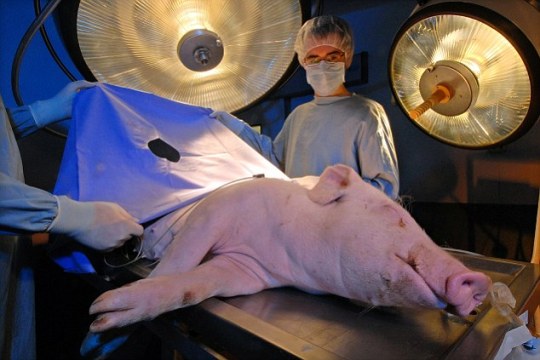

#Groundbreaking Pig Heart Transplant is Performed for the Second Time#The University of Maryland Medical Center#Lawrence Faucette#heart#pig heart#heart transplant#organ transplant#xenotransplant#animals#strange#stranger things#science#science news
20 notes
·
View notes
Text
Choosing the Right Gastrointestinal Tract Drug – Factors to Consider
The gastrointestinal (GI) tract is a complex system responsible for digestion and absorption of nutrients. Given its critical function, disorders affecting the GI tract can significantly impact overall health and quality of life. Selecting the right medication to treat these conditions is essential for effective management and recovery. Centurion HealthCare, a leading gastrointestinal tract drugs supplier in India, offers a range of high-quality medications designed to address various GI disorders. In this article, we will explore the factors to consider when choosing the right gastrointestinal tract drug, and why Centurion HealthCare stands out in the best pharmaceutical industry in India.
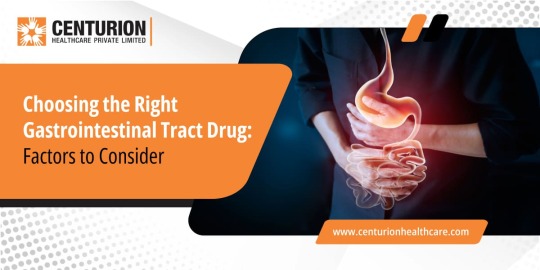
Understanding Gastrointestinal Tract Disorders
GI tract disorders encompass a wide range of conditions affecting different parts of the digestive system, including the esophagus, stomach, intestines, liver, pancreas, and gallbladder. Common GI disorders include:
Gastroesophageal Reflux Disease (GERD)
Peptic Ulcer Disease
Irritable Bowel Syndrome (IBS)
Inflammatory Bowel Disease (IBD)
Hepatitis
Pancreatitis
Each condition requires specific treatment strategies and medications to manage symptoms, promote healing, and prevent complications.
Factors to Consider When Choosing a Gastrointestinal Tract Drug
Choosing the right drug for treating GI disorders involves multiple factors, including the specific condition, the patient’s medical history, and potential side effects. Here are key considerations:
1. Accurate Diagnosis
An accurate diagnosis is the first step in selecting the appropriate medication. Physicians use various diagnostic tools such as endoscopy, colonoscopy, imaging studies, and laboratory tests to identify the specific GI disorder. Understanding the underlying cause and severity of the condition is crucial for effective treatment.
2. Mechanism of Action
Different gastrointestinal tract drugs work through various mechanisms to achieve therapeutic effects. Understanding how a drug works helps in selecting the most suitable option. Common mechanisms include:
Antacids: Neutralize stomach acid, providing quick relief from heartburn and indigestion.
Proton Pump Inhibitors (PPIs): Reduce the production of stomach acid, effective in treating GERD and peptic ulcers.
H2 Receptor Antagonists: Decrease acid production by blocking histamine receptors in the stomach lining.
Prokinetics: Enhance gut motility, useful in conditions like gastroparesis.
Antispasmodics: Relieve intestinal cramps and spasms, often used in IBS treatment.
Anti-inflammatory Drugs: Reduce inflammation in the GI tract, essential for managing IBD.
3. Efficacy and Safety
The efficacy and safety profile of a drug are critical factors in the decision-making process. Clinical trials and real-world studies provide valuable information on a drug’s effectiveness and potential side effects. Physicians must weigh the benefits against the risks to ensure the chosen medication offers the best possible outcome for the patient.
4. Patient-Specific Factors
Each patient is unique, and various individual factors can influence drug selection. These include:
Age: Certain drugs may be more suitable for children, adults, or the elderly.
Medical History: Pre-existing conditions, such as kidney or liver disease, can affect drug metabolism and tolerance.
Allergies: Patients with known drug allergies must avoid medications that could trigger adverse reactions.
Concurrent Medications: Drug interactions can impact efficacy and safety, requiring careful consideration of all medications the patient is currently taking.
5. Route of Administration
The route of administration can affect the drug’s efficacy and patient compliance. Common routes for GI drugs include:
Oral: Tablets, capsules, and liquids are convenient for most patients.
Intravenous: Used in severe cases or when oral administration is not feasible.
Topical: Suppositories and enemas are used for localized treatment in the lower GI tract.
6. Cost and Availability
Cost can be a significant factor, especially for long-term treatments. Generic versions of drugs often offer the same efficacy as brand-name medications at a lower cost. Availability of the drug in the local market is also crucial to ensure uninterrupted treatment.
Centurion HealthCare: Leading the Way in GI Tract Drug Supply
Centurion HealthCare has established itself as a premier gastrointestinal tract drugs supplier in India, renowned for its commitment to quality, innovation, and patient care. Here’s why Centurion HealthCare is a trusted name in the best pharmaceutical industry in India:
1. Comprehensive Product Range
Centurion HealthCare offers a wide range of gastrointestinal tract drugs, catering to various GI disorders. Their product portfolio includes antacids, PPIs, H2 receptor antagonists, prokinetics, antispasmodics, and anti-inflammatory medications, ensuring comprehensive treatment options for healthcare providers.
2. Quality Assurance
Quality is at the heart of Centurion HealthCare’s operations. The company adheres to stringent quality control measures, from raw material sourcing to final product testing, ensuring that every medication meets international standards for safety and efficacy.
3. Research and Development
Centurion HealthCare invests heavily in research and development to stay at the forefront of pharmaceutical innovation. Their R&D team continuously works on developing new formulations and improving existing products to address emerging healthcare needs.
4. Patient-Centric Approach
Understanding that each patient is unique, Centurion HealthCare adopts a patient-centric approach in drug development and supply. Their medications are designed to provide maximum therapeutic benefit with minimal side effects, enhancing patient outcomes and quality of life.
5. Global Reach
As a leading gastrointestinal tract drugs supplier, Centurion HealthCare has a robust distribution network that ensures their products are available not only across India but also in international markets. Their commitment to excellence has earned them a reputation as a reliable partner for healthcare providers worldwide.
6. Affordability
Centurion HealthCare is dedicated to making high-quality medications accessible to all. Their cost-effective solutions, including generic versions of popular GI drugs, help reduce the financial burden on patients while maintaining high standards of care.
Conclusion
Choosing the right gastrointestinal tract drug involves careful consideration of various factors, including accurate diagnosis, mechanism of action, efficacy, safety, patient-specific factors, route of administration, and cost. Centurion HealthCare, as a leading gastrointestinal tract drugs supplier in India, excels in providing high-quality, effective medications that cater to the diverse needs of patients with GI disorders.
With a commitment to quality, innovation, and patient-centric care, Centurion HealthCare stands out in the best pharmaceutical industry in India. Their comprehensive product range, stringent quality assurance, advanced R&D, global reach, and affordability make them a trusted partner for healthcare providers seeking reliable solutions for GI tract disorders.
By choosing Centurion HealthCare, you can be confident in the quality and efficacy of the medications you are prescribing or consuming, ensuring the best possible outcomes for gastrointestinal health.
#Best Indian pharma industry 2024#Best pharmaceutical industry in India#Gastrointestinal tract drugs supplier#Gastrointestinal tract drugs supplier in India
3 notes
·
View notes
Text
A Book Home Doctor
In an era where self-sufficiency and empowerment are paramount, the concept of taking charge of one’s health and well-being has gained significant traction. The book “Home Doctor” emerges as a beacon of guidance, offering readers an invaluable resource to navigate the world of DIY health care. In this article, we delve into the essence of the book, its significance, and the benefits it bestows upon those seeking to become proactive stewards of their health.
Empowerment through Knowledge
“Home Doctor” is more than just a book; it’s a compendium of knowledge designed to equip individuals with the tools they need to handle common health issues within the confines of their own homes. Written by medical experts and seasoned practitioners, this comprehensive guide offers readers insights into identifying, understanding, and treating a wide array of ailments.
By demystifying medical jargon and presenting information in an accessible manner, the book empowers readers to make informed decisions about their health. From basic first aid and minor injuries to managing chronic conditions, “Home Doctor” covers a diverse range of topics that cater to individuals of varying medical literacy levels.
A Holistic Approach
One of the book’s strengths lies in its emphasis on a holistic approach to health care. It recognizes that well-being extends beyond the physical realm and encompasses mental, emotional, and spiritual aspects. “Home Doctor” advocates for preventive measures, healthy lifestyle choices, and stress management techniques, all of which contribute to a well-rounded approach to health maintenance.
Moreover, the book acknowledges the role of alternative and complementary therapies, supplementing conventional medical advice with insights into natural remedies, herbal medicine, and mindfulness practices. This well-rounded approach resonates with readers who value a comprehensive understanding of health.
Navigating a Changing Landscape
The landscape of health care is evolving, with an increasing emphasis on patient autonomy and self-care. “Home Doctor” aligns seamlessly with this shift, enabling individuals to take control of their health in a responsible and informed manner. As medical costs rise and access to professional care becomes more complex, the book emerges as a timely solution for addressing minor health concerns independently.
However, it’s essential to note that “Home Doctor” is not a replacement for professional medical advice, especially in cases of serious illnesses or emergencies. Instead, it complements the existing medical system by providing readers with the knowledge to assess situations, make informed decisions, and seek professional help when necessary.
Benefits of “Home Doctor”
The advantages of embracing the principles outlined in “Home Doctor” are multifaceted:
Cost-Effective: By being equipped to handle minor health issues at home, individuals can save on medical costs associated with routine visits to healthcare providers.
Empowerment: Knowledge is empowering. The book instills confidence in readers to manage health matters effectively, reducing anxiety and uncertainty.
Proactive Health Management: Prevention is better than cure. The book promotes healthy habits and preventive measures, reducing the likelihood of future health complications.
Resource for Caregivers: “Home Doctor” is a valuable resource for caregivers looking after family members or loved ones, offering guidance on managing common health concerns.
Immediate Accessibility: In situations where professional help might not be readily available, the book equips readers to respond promptly to health issues.
Conclusion
“Home Doctor” transcends the boundaries of a conventional medical guide. It signifies a paradigm shift in how individuals approach their health, fostering a sense of responsibility and empowerment. With its comprehensive insights, holistic approach, and focus on informed decision-making, this book is poised to become an indispensable tool for those seeking to lead healthier, more self-reliant lives. As we navigate an ever-evolving healthcare landscape, “Home Doctor” stands as a testament to the potential of knowledge and individual agency in promoting well-being.
Are you ready to embark on a journey towards empowered health management? “Home Doctor” is your guide to understanding, preventing, and addressing common health concerns from the comfort of your own home. Don’t miss out on the opportunity to:
Empower Yourself: Gain the knowledge and confidence to make informed decisions about your health and well-being.
Save on Costs: Learn how to handle minor health issues at home, reducing unnecessary medical expenses.
Promote Preventive Health: Discover holistic approaches and proactive measures that contribute to a healthier lifestyle.
Become a Resourceful Caregiver: Equip yourself with valuable insights for taking care of your loved ones’ well-being.
Respond Swiftly: Be prepared to tackle health concerns even when professional help is not immediately available.
Unleash the power of knowledge and take the reins of your health journey. Grab your copy of “Home Doctor” and embark on a path towards healthier living today!
Remember, while “Home Doctor” empowers you to manage common health issues independently, always seek professional medical help for serious illnesses or emergencies. Your well-being is in your hands — take the first step towards a healthier, more self-reliant future now!
7 notes
·
View notes
Text
Health Promotion and Disease Prevention
Health Promotion and Disease Prevention
Introduction
Health promotion and disease prevention are critical components of public health strategies aimed at improving the health and well-being of individuals and communities at the 15th American Healthcare, Hospital management, Nursing, And Patient Safety Summit Here's an overview of these concepts:
Health Promotion:
1. Health promotion involves empowering individuals and communities to take control of their health and make positive lifestyle choices.
2 . It focuses on promoting behaviors and conditions that contribute to good health, such as regular physical activity, healthy eating, stress management, and avoiding tobacco and excessive alcohol consumption.
3 . Health promotion activities often include health education, community outreach, and the creation of supportive environments that facilitate healthy choices.
4 . The goal of health promotion is to enhance well-being, prevent diseases, and improve quality of life.
Disease Prevention:
1 . Disease prevention involves efforts to reduce the incidence, prevalence, and impact of diseases and health conditions.
2 . Prevention strategies may target different stages of the disease process, including primary prevention (preventing the onset of disease), secondary prevention (detecting and treating diseases in their early stages), and tertiary prevention (managing and reducing the complications of existing diseases).
3 . Prevention efforts may include vaccination programs, screening initiatives, health behavior interventions, and environmental modifications to reduce exposure to risk factors.
4 . Disease prevention aims to reduce the burden of illness, decrease healthcare costs, and improve overall population health outcomes.
We cordially invite you to attend the "15th American Healthcare, Hospital management, Nursing, And Patient Safety Summit; (15AHNPSUCG2025)," which will be conducted from May 14-16 as a hybrid event in San Francisco, United States & Virtual.
15th American Healthcare, Hospital management, Nursing, And Patient Safety Summit: This blog focuses specifically on health promotion practice, offering insights, best practices, and case studies from professionals working in the field of health promotion and disease prevention.
Important Information:
Conference Name: 15th American Healthcare, Hospital Management, Nursing, And Patient Safety Summit
Short Name: #15AHNPSUCG2025
Dates: May 14-16,2025
Venue: San Francisco, United States & Virtual
Email: [email protected]
Visit: https://health.universeconferences.com/
Call for Papers: https://health.universeconferences.com/call-for-paper/Register here: https://health.universeconferences.com/registration/Call/WhatsApp Us: +442033222718
#AmericanHealthcareconference2025 #Hospitalmanagementsummit #healthcare #health #primaryhealth #nursing #patientsafety #healthcaremanagement #patientcare #occupationalhealth #healthsystem #pharmaceutical #clinicaltrials #diabetes #changemanagement #mentalhealth #familyplanning #ACP #Infectionprevention #telehealth #oralhealth #Healthcareconference
#AmericanHealthcareconference2025#Hospitalmanagementsummit#healthcare#health#primaryhealth#nursing#patientsafety#healthcaremanagement#patientcare#occupationalhealth#healthsystem#pharmaceutical#clinicaltrials#diabetes#changemanagement#mentalhealth#familyplanning#ACP#Infectionprevention#telehealth#oralhealth#Healthcareconference
2 notes
·
View notes
Text
Updates on Health
I believe at this time that I have liver disease and have had liver disease going back many years now. In the past I posted on here about concerns that I have about my mortality and longevity based on heuristic assessments of my physical conditions, and I had not been able to pin point what the cause was or causes were.
The doctors and medical system has been receiving me for years now when I have acute attacks, and they have been in bulk dismissive, derisive, or deflective; they have often treated me as if I am a liar or my concerns are overblown and unfounded (because they lack evidence on the side of the medical system which is doing everything in its considerable power to neglect me to death and refusing often to take measures at my direction or at the direction of doctors charged with fiduciary duty to me).
The collection of symptoms that I've had and continue to have point pretty consistently to progressive portal hypotension which itself points to complications of liver failure and likely cirrhosis of the liver. My complex medical history would be consistent with that and some level of liver damage would be expected from the swig of isopropyl alcohol that I had as a child. Many of the subsequent infections and proneness that I have had to infections likely stem from that damage and feedback on it.
I'm awaiting potential appointments to be screened extensively for liver disease though I have little faith and trust that it will be carried out in anything other than a token manner. Depending on how advanced things are though my longevity is significantly reduced. If I have compensated cirrhosis then I can expect to live on average around 9 to 12 years and if I have decompensated cirrhosis of the liver then I can expect to live less than that. I hope to have caught symptoms soon enough and to be seeking adequate treatment that I'm not into either of compensated cirrhosis or decompensated cirrhosis and can take measures to prevent or reverse any existing damage.
I hope to live a 100 years or more and at least to the average age of someone of my class, and I consider any death or disability prior to that to be premature, and I consider any medical professional that has failed to identify any symptoms consistent with a diagnostic criteria for cirrhosis or portal hypertension including but not limited to bleeding of the gums, bleeding of the GI tract, difficulty swallowing or frog like sessions in the throat, abnormal albumin levels, or abnormal cholesterol levels to have breached fiduciary duty to me. This is consistent with my will and testament.
3 notes
·
View notes
Text
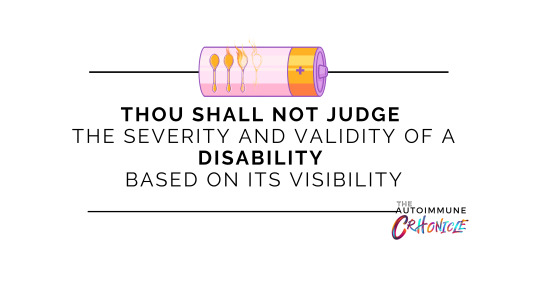
Recently, I find myself having to 'prove' my disease, symptoms, and pain to others as though to make them and myself believe that it's INDEED real. (to my fellow warriors, your disease and pain is enough-- you're enough)
I feel in my bones the doubts and judgements (even myself) that sows the seeds of negative emotions affecting my mental health.
Why does my disability have to be recognized and supported in the first place?
Here are my thoughts:
I DO NOT have to prove my pain and disease to anyone -
My "invisible" but very real, unimaginary illness exists. I feel pain 24/7. Some people do not (even try to) understand and have a distorted and disproportionate expectations.
2) We just want the support of the people dear to us.
People surviving with chronic illness face challenges that are inconceivable to normal and/or healthy people.
Often times, family and friends tend to make insensitive or thoughtless remarks or even requests that exhaustively impact our well-being.
3) We are dis-ABLE-d
Inspite of the awful unpredictable nature of autoimmune diseases, there are moments, hours, or even days of "low pain". Sometimes it lasts for a short period of time, sometimes not.
Personally, whenever I do not feel crackling pains, (chronic & extreme) fatigue, weakness and have all the limited energy (SPOONS) to move around and carry out chores, I DO THEM. I AM ABLE TO DO THEM.
To put it briefly, even through pain, I can carry out chores that I DEEM AM ABLE TO ACCOMPLISH. Otherwise, I will NOT carry through or postpone the tasks / activities.
In my experience, I do feel that I am a burden when it comes to contributing to house works and chores nowadays. I am not WHO and WHAT I used to be -- as much as I want to move I feel extremely guilty for not being able to do so. But I do remind myself that autoimmune in general cannot be prevented and there's only so much that I can do.
THAT IS WHY when I CAN, I DO.
4) Stop putting labels and words in our mouths:
When we are trying to help out and contribute, please do not be so insensitive as to say what we CAN and CANNOT do.
Believe us when we say we wen and DO NOT ASSUME THAT WE CANNOT.
Example: You see us washing the dishes then suddenly you would remark "You are not able to do that." YES WE CAN, WHEN WE CAN.
Yes we are disabled and each and every one of us have different diagnoses, symptoms, limitations -- but we continue to fight and make things work everyday. Chronically ill people are creative, smart, innovative, and are masters of life!
We are only disabled because of our illness and its complications which might prevent us to perform, live, and interact with the rest of the world in what's perceived to be in a normal way.
But please, we will appreciate it if we you can also give us the space to fully appreciate being ABLED.
Caveat: Please do not gaslight or get AGGRESSIVE and make degratory remarks or make your loved one feel guilty for not being able to perform normal tasks that may seem easy, fast, or normal to you.
In my case, I am able to cook, clean, and do chores but in a very, very slow and painful phase requiring rest every 5 minutes as I tend to be fantastically exhausted.
(Yes, 10 steps is exhausting enough for me. Legs crack up, lungs requiring deep breathes. But I STILL DO, I endure when I can.)
5) We appreciate all the emotional, physical, and financial support extended to us
Every single effort to help, support, and understand our condition is wholeheartedly appreciated!
Most importantly, especially to the family members, it would mean a lot if we can make an effort to really learn and work on knowing the specific autoimmune disease your loved ones have.
We are also trying to learn more about our disease everyday. Autoimmune is still a big mystery even to the medical community.
6) We DO NOT NEED unsolicited advise or opinions you heard online from herbal doctors or those who are "HEALED" or "CURED" of the disease
We do understand that a healthy and balanced diet is important but you also have to remember that:
+ Autoimmune diseases are incurable. It can only be managed.
+ Each patient / fighter are experiencing different symptoms. No TWO LUPUS patients' experiences and symptoms and treatments are the same.
+ There is no "GETTING BETTER." We do not enjoy the pain, but realistically, this only upsets us.
+ If there was one single herb and diet restrictions that works, all of us would have been cured, healed.
Nonetheless, we know your intentions mean well! :)
#autoimmine disease#autoimmune#chronic pain#chronically ill#chronic illness#chronic fatigue#lupusalertday#lupus warrior#spoonies#chronic disability#queen selena#rheumatoid arthritis#rheumatoiddisease#raynauds#invisible disability#invisible illness#spoon theory#disabled#fuck ableds#shit abled people say#symptoms#stress#wellbeing#fibromyalgia#disease#the fatigue is real#chronically fatigued
5 notes
·
View notes
Text
Signs and Symptoms of Phimosis
What is Phimosis?
Phimosis is a medical issue where the foreskin of the penis is tight and cannot be pulled back to reveal the head of the penis. This condition can result in pain and discomfort during sexual intercourse, urination, and other physical activities. It can also lead to other health complications if left untreated. In this article, we will explore the symptoms of phimosis, its causes, and available treatments.
Root Causes of Phimosis
There are various reasons for phimosis, including genetics, skin conditions like lichen sclerosus, and infections like balanitis. Additionally, phimosis can be caused by scarring or injury to the foreskin that leads to fibrous tissue buildup, making retraction difficult.
Key Symptoms of Phimosis
The most noticeable symptom of phimosis is having trouble pulling back the foreskin over the head of the penis. This can lead to pain and discomfort during sexual intercourse, urination, and other physical activities. Some other symptoms of phimosis include:
Swelling and redness of the head of the penis
Pain or discomfort during urination
Buildup of smegma (a mixture of dead skin cells and oils) under the foreskin
Inflammation or infection of the head of the penis
If you experience any of these symptoms, it is crucial to consult a doctor for proper diagnosis.
Treatment Options for Phimosis
The treatment plan for phimosis will depend on the severity of the condition and the underlying cause. In some cases, phimosis can be treated with topical creams or steroid ointments that help soften the tissue, making it easier to retract the foreskin. For severe cases, surgery may be necessary.
Circumcision is a common surgical procedure for phimosis, which involves removing the foreskin completely to expose the head of the penis. This procedure can be done under local or general anesthesia and is usually a simple procedure with a quick recovery.
Another treatment option is preputioplasty, which involves loosening the tissue of the foreskin without removing it completely. Preputioplasty is a good alternative for patients who want to keep some of their foreskin and avoid the more invasive circumcision procedure.
Phimosis FAQs
Is phimosis a dangerous condition?
Phimosis can be a dangerous condition if left untreated, causing pain and discomfort during sexual intercourse and urination, as well as other health problems. But with proper treatment, most people can overcome phimosis and lead a healthy and normal life.
Can phimosis be prevented?
There is no guaranteed way to prevent phimosis, as it can be caused by various factors, such as genetics and infections. However, practicing good hygiene and avoiding injury to the foreskin can reduce the risk of developing phimosis.
There is no guaranteed way to prevent phimosis, as it can be caused by various factors, such as genetics and infections. However, practicing good hygiene and avoiding injury to the foreskin can reduce the risk of developing phimosis.
Conclusion
In conclusion, phimosis is a condition where the foreskin of the penis is tight and cannot be pulled back to reveal the head of the penis. Symptoms of phimosis include trouble retracting the foreskin, discomfort during sexual activity and urination, and swelling and redness of the penis head. Different treatments for phimosis exist, including topical creams and ointments, circumcision, preputioplasty, and there are also natural remedies for phimosis available that can be very effective. If you are experiencing symptoms of phimosis, it is important to seek medical attention for proper diagnosis and treatment options, including natural treatments.
3 notes
·
View notes
Text
What is chamomile, benefits of drinking chamomile tea for your health
Benefits of chamomile tea
The potential benefits of chamomile tea, for which there is the most evidence, include:
1. Reducing menstrual pain
Several studies have linked chamomile tea to reduced severity of menstrual cramps. A 2010 study, for example, found that consuming chamomile tea for a month could reduce the pain of menstrual cramps. Women in the study also reported less anxiety and distress associated with period pain.
2. Treating diabetes and lowering blood sugar
Again, some studies have found that chamomile tea can lower blood sugar in people with diabetes. Research does not show that chamomile is a viable substitute for diabetes medications, but it may be a helpful supplement to existing treatments.
Similarly, a 2008 study of rats found that consistent consumption of chamomile tea might prevent blood sugar from increasing. This effect reduces the long-term risk of diabetes complications, suggesting that chamomile could improve diabetes outcomes.
3. Slowing or preventing osteoporosis
Osteoporosis is the progressive loss of bone density. This loss increases the risk of broken bones and stooped posture. While anyone can develop osteoporosis, it is most common among post-menopausal women. This tendency may be due to the effects of estrogen.
A 2004 studyTrusted Source found that chamomile tea might have anti-estrogenic effects. It also helped promote bone density, but the study’s authors caution that further research is needed to prove this apparent benefit.
4. Reducing inflammation
Inflammation is an immune system reaction to fight infection. Chamomile tea contains chemical compounds that may reduce inflammationTrusted Source. However, long-term inflammation is linked to a wide range of health problems, including hemorrhoids, gastrointestinal pain, arthritis, autoimmune disorders, and even depression.
5. Cancer treatment and prevention
Some studies suggest that chamomile tea may target cancer cells, or even prevent those cells from developing in the first place. However, research so far is inconclusive, and scientists say more work is needed to prove chamomile’s anti-cancer claims. Also, most research has looked at clinical models in animals, not humans.
A 2012 studyTrusted Source compared the cancer-fighting powers of marigold and chamomile teas. Both were able to target cancer tumors selectively, but the effects of marigold tea were more potent.
6. Helping with sleep and relaxation
Chamomile tea is widely thought to help people relax and fall asleep. Few clinical trials have tested this, however.
In one review of the current evidence, 10 of 12 cardiovascular patientsTrusted Source are quoted as having fallen asleep shortly after consuming chamomile tea. A handful of other studies looking at clinical models also suggest that chamomile tea may help people relax.
In a study using rats, chamomile extract helped sleep-disturbed rodents fall asleep. Many researchers believe that chamomile tea may function like a benzodiazepine. Benzodiazepines are prescription drugs that can reduce anxiety and induce sleep. Some research suggests that chamomile binds to benzodiazepine receptors.
A review looking at the ability of chamomile tea to reduce anxietyTrusted Source is inconclusive. Some studies show a modest anti-anxiety benefit, but others do not.
7. Treating cold symptoms
Anecdotal evidence and some studiesTrusted Source suggest that inhaling steam with chamomile extract can relieve some of the symptoms of the common cold. But this benefit is not proven yet.
8. Treatment for mild skin conditions
A small 1987Trusted Source study found that applying chamomile extract directly to a wound assisted healing. Likewise, a few studiesTrusted Source have found that chamomile ointments may help with eczema and mild inflammatory skin conditions, although they are not as effective as hydrocortisone cream.
2 notes
·
View notes
Text
Enhancing Children's Health: Comprehensive Strategies for Preventive Care, Behavioral Support, and Access to Specialty Services
Children’s health services have a crucial impact on their growth and development, as well as their ability to live healthy lives. A variety of effective community-based approaches have been developed to meet their needs.
Effective health promotion or primary prevention programs often require broad environmental and social interventions along with more traditional medical approaches.
Preventive Care
Getting preventive care is the best way to keep your children healthy. It can detect and treat illness before they get worse, which can save lives and prevent future health costs.
Some examples of children health services well-child visits (every few months until your child is an infant, then yearly thereafter), routine immunizations (polio, hepatitis A and B, and DTaP (diphtheria, tetanus, and pertussis)), and screenings for behavioral and health conditions. It also includes counseling to help you quit smoking or maintain a balanced diet and exercise regularly.
These visits and screenings are usually covered at no cost under most private health insurance plans purchased through the Health Insurance Marketplace or from your employer, as well as most Medicaid and the Children's Health Insurance Program. However, older "grandfathered" plans that existed before the Affordable Care Act did not have to offer these free preventive care services. These plans also do not have to cover maternity care or newborn health services.
Routine Care
Children's health care services include routine physical examinations, immunizations and dental care. These services contribute to children's healthy growth and development.
A primary measure of access to health care is whether a family has a regular source of health care for their child. Research shows that families with a regular source of health care are more likely to use preventive services and have better utilization patterns than those without (Holl et al., 1984; Monheit and Cunningham, 1992; Newacheck et al., 1995).
Promote strategies to facilitate initial and ongoing enrollment in Medicaid and Child Health Plus, including using presumptive eligibility. Implement home visiting programs that have demonstrated positive impacts on improving the use of well-child care. Develop and disseminate tools to prompt/facilitate routine care, such as checklists and registries/data systems. Educate providers on the American Academy of Pediatrics/Bright Futures guidelines and other quality measures that drive improvements in clinical practice, such as developmental screening.
Behavioral Health
Many children and adolescents have behavioral health problems that require specialized care. These include mental, emotional and developmental disorders. They also can be related to substance use, stressors, trauma and other factors. These problems can lead to poor academic performance, trouble in school, family difficulties and a variety of other serious health issues throughout a person’s lifetime.
CDC has linked screening, early identification and linkage to services with improved health outcomes for children who have behavioral health needs. These include helping them learn to cope and deal with their emotions, preventing serious complications and improving their quality of life.
Behavioral health services may be provided by psychologists, social workers, psychiatric nurse practitioners, licensed professional counselors and marriage and family therapists. These specialty providers can be found in clinics, schools and other settings. In addition, some primary care providers, especially those who have been trained in behavioral health interventions, provide care for children with some behavioral health issues.
Specialty Care
Perform thorough physical examinations and diagnose a wide variety of childhood illnesses and conditions. Develop and implement individualized treatment plans for each patient, prescribing medications and/or performing medical procedures as needed.
Children and adolescents with chronic health problems may need to see pediatric subspecialists for long-term consultation and co-management. Several factors can impact access to subspecialty care, including family-level (e.g., cost and insurance availability) and provider-level factors (e.g., appointment wait times).
Families of CYSHCN often face barriers to accessing specialty care for their children. This includes financial barriers such as high out-of-pocket costs and limited provider networks, as well as geographic barriers such as long travel distances. To support these families, the Program provides assistance paying for health care-related expenses through a state program called Children’s Special Health Care Services (CSHCS). This program helps pay for necessary medical care and services to help families get the care their child needs to be healthy.
0 notes
Text
The Importance of Orthopedic Health: Tips for Preventing Injuries

The skeletal system is crucial in health because of the roles it plays in the body. It is necessary for people to have equal value as they age. These include the bones, joints, muscles, and ligaments that give our bodies support and enable movement, walking, and performing activities. For any physical person–be it an athlete, a fitness freak, or a person who sits on a chair all day at work–orthopedic health needs to be taken care of to avoid injuries that hamper movement and bring the quality of life down. Shreyaditya Hospital is now emerging into the position of the Best Orthopaedic Hospital in Jaipur, and we encourage people to go for regular check-ups with our splendid Orthopaedician to maintain a healthy and sound Orthopaedic life throughout the years.
Why Orthopedic Health Matters
The system consists of bones, muscles, tendons, and joints, working together like machine parts. It is bound to wear and tear daily. This natural process, coupled with factors like poor posture, stress, and inadequate diets, leads to musculoskeletal injuries. Some common conditions affecting the skeletal system include breaks and fractures, ligament and tendon strains, and sometimes inflammation of the joint besides joint pain because of arthritis. These conditions, if not well managed, are likely to become complicated, necessitating operations or permanent soreness. If you act in a manner to prevent orthopedic mishaps in the first place, you can avoid a not-so-fun lifestyle of chronic pain.
Shreyaditya Hospital is the Top Orthopaedic Hospital in Jaipur. It provides preventive health check-up services with treatment for orthopedic disorders. We have the best solutions to guarantee our patients get the best and most recent service.
Possible Suggestions to Avoid Orthopedic Injuries

Maintain a Healthy Weight
Obesity is not only painful but also unduly taxing on bones and joints, especially the knee, hip, and spinal columns. It leads to excessive pressure on the joints leading to the early development of rheumatoid arthritis. It could be a powerful force that could effortlessly be discharged by managing one’s we, eating the proper diet, and doing frequent remedial exercises that would assist in maintaining the stable condition of the orthopedic system. If you are doubtful about how to begin, consult an Orthopedic doctor at Shreyaditya Hospital, the Best Orthopaedic Hospital in Jaipur.
Strengthen Your Muscles
Muscles give vital support to individual bones, and joints protect bones from getting sprained or fractured. Other than stretching, one should do exercises for developing the muscles like, squatting, lunging, and lifting weights. They should all be involved concerning major muscle groups and the muscles in the Abuse that support the spine and help to maintain good posture.
Practice Proper Posture
With the current development, we sit in the wrong postures that exert pressure on our back, neck, and shoulders, developing long-term orthopedic complications. Specifically, body mechanics is applicable whether involving sitting at a desk or lifting weights however large. Equip yourself and your co-workers with ergonomic chairs and desks and get up every hour to stretch and adjust the positions of your muscles. Another contact to address client attraction specifically and guide clients on how to avoid improper posture that strains muscles and bones is Shreyaditya Hospital – an Orthopaedic Hospital in Jaipur.
At Shreyaditya Hospital, our specialized doctors focus on preventing orthopedic problems and treating existing ones. Being the Top Orthopaedic Hospital in Jaipur, we provide complete orthopedic care, covering everything from prevention to treatment and physical therapy. Take care of your orthopedic needs now, and enjoy a future full of movement, strength, and vitality.
Know More about Orthopedic - - Understanding Common Orthopedic Injuries: Causes and Treatments
Knee Replacement Surgery Hospital in Jaipur
Protect your skeletal system with Shreyaditya Hospital, a famous Knee Replacement Surgery Hospital in Jaipur. Our expert orthopedic team ensures optimal bone, joint, and ligament health. From athletes to office workers, maintain mobility and prevent injuries. We offer advanced Knee Replacement Surgery in Jaipur, orthopedic care, injury prevention, and joint health solutions. Trust us for orthopedic wellness. Experience expert care at Shreyaditya Hospital, Jaipur's premier orthopedic destination.
Shreyaditya Orthopedic & Super Speciality Hospital delivers expertise care across various specialties to meet all your healthcare needs. For your knee, hip, and joint replacement in Jaipur, choose Shreyaditya Orthopedic Hospital. We offer a specialized Joint Replacement Surgery service led by highly experienced Orthopedic surgeons, assistant surgeons, and a team of physiotherapists. We are just a call away, connect us at +91 8949296371 to problems related to joints, ligaments, etc. Visit us today. Know more about Shreyaditya Orthopedic & Super Speciality Hospital https://bit.ly/4cLubDD
#best orthopaedic doctor in jaipur#hospital#joint replacement#orthopaedic specialist#orthopaedic surgeon#orthopedic#orthopedics
0 notes
Text
Expert Cardiologist in Tirunelveli for Comprehensive Heart Care

The heart is one of the most important organs in the body, and its health is essential for a long and fulfilling life. Expert cardiac care is now easier than ever for the people of Tirunelveli. Finding the right cardiologist in Tirunelveli means you can rest assured that you will receive expert treatment, whether you want to treat an existing heart condition or take preventative measures.
Why consult a cardiologist?
If you have heart-related symptoms such as chest pain, irregular heartbeat, or difficulty breathing, a visit to a cardiologist is essential. Even if there are no obvious signs, regular check-ups can help you detect potential problems before they become serious. Cardiologists are trained to diagnose and treat a range of cardiovascular conditions, including high blood pressure, cholesterol lowering, and heart disease.
Comprehensive Heart Care in Tirunelveli
Cardiologists in Tirunelveli are equipped with advanced diagnostic tools and treatment options to meet all your heart health needs.
These professionals offer a wide range of services, from non-invasive tests like ECGs and stress tests to more complex procedures. When you choose an experienced cardiologist in Tirunelveli, you can be sure that your heart health is in expert hands.
Preventive care is another important aspect of cardiology, and cardiologists in Tirunelveli emphasize lifestyle changes, early detection, and individualized treatment plans. Whether it's diet, exercise, or medication, a good cardiologist can help you take steps to protect your heart.
Make your heart health a priority today
If you have concerns about your heart or need a regular check-up, now is the perfect time to visit a cardiologist in Tirunelveli. Taking steps early can improve your heart health and avoid future complications. Book an appointment now to receive expert care and peace of mind.
#hospital#healthylifestyle#shifahospitals#tirunelveli#health & fitness#health and wellness#health#health tips#cardiologist#healthcare#cardiology doctor#cardiology#heart specialist in tirunelveli#heart attack#heart disease#heart health#heart condition
0 notes
Text
From Treatment to Recovery: What You Need to Know About Healing Times at Jaipur’s Top Skin Clinic

When it comes to skin treatments, understanding the healing process is crucial for effective recovery. Whether you're considering a cosmetic procedure or addressing a skin condition, knowing what to expect can help manage your expectations and ensure a smoother recovery. In this article, we'll delve into the healing times associated with various treatments offered at the best skin treatment clinic in Jaipur, Dr. Agrawal Allergy & Skin Care Centre.
Understanding Skin Treatment
Before diving into healing times, it’s essential to understand the types of skin treatments available. Skin treatments can range from medical interventions for conditions like acne and eczema to cosmetic procedures like chemical peels and laser therapy. Each type of treatment has unique healing times, influenced by the procedure's invasiveness and the individual's skin type.
Factors Influencing Healing Times
Healing times vary based on several factors:
Type of Treatment: Surgical procedures typically require longer recovery than non-invasive treatments.
Skin Type: Individuals with sensitive skin may experience longer healing times.
Age: Younger skin often heals faster than older skin.
Health Conditions: Pre-existing health issues can affect healing.
Aftercare: Following the post-treatment care plan provided by your dermatologist can significantly influence healing.
Common Treatments and Their Healing Times
Chemical Peels
Chemical peels are popular for improving skin texture and tone. Healing times can vary based on the peel's depth.
Light Peels: Minimal downtime, with most patients returning to normal activities within a few days.
Medium Peels: Recovery may take one to two weeks, with redness and peeling expected during this period.
Deep Peels: Significant downtime of up to three weeks is typical, as the skin will need time to heal and regenerate.
Laser Therapy
Laser treatments are effective for various concerns, including pigmentation, scarring, and hair removal. The healing process varies:
Non-ablative Laser: Minimal downtime, with slight redness lasting a few hours to days.
Ablative Laser: More intense treatments may require one to two weeks for healing, during which swelling and peeling may occur.
Microneedling
Microneedling is a minimally invasive procedure aimed at boosting collagen production. Patients often experience:
Immediate Effects: Redness and swelling may last for a few days.
Full Recovery: Most individuals return to regular activities within a week, with results improving over several months.
Dermal Fillers and Botox
Injectable treatments like fillers and Botox offer immediate results with minimal downtime.
Healing Time: Most people experience slight swelling or bruising that typically resolves within a few days.
Surgical Procedures
For more severe conditions, surgical options may be necessary. Procedures like skin excisions or Mohs surgery have longer recovery periods:
Initial Healing: Patients may require one to two weeks for the initial healing phase.
Complete Recovery: Full recovery can take several months, depending on the extent of the surgery.
The Importance of Aftercare
Regardless of the treatment you choose, adhering to your dermatologist’s aftercare instructions is crucial for a successful recovery. Proper aftercare includes:
Avoiding Sun Exposure: Protect your skin from UV rays to prevent complications and ensure proper healing.
Moisturizing: Keeping the skin hydrated can accelerate the healing process.
Avoiding Makeup: Especially in the initial healing phase, allowing your skin to breathe is essential.
When to Seek Help
If you notice any signs of complications during your healing process, such as excessive redness, swelling, or signs of infection, it’s vital to contact your dermatologist immediately. Prompt attention can prevent further issues and ensure your recovery stays on track.
How Dr. Agrawal Allergy & Skin Care Centre Can Help
At the best skin treatment clinic in Jaipur, Dr. Agrawal Allergy & Skin Care Centre, patients benefit from a comprehensive approach to skincare. With a team of experienced professionals, they offer personalized treatment plans tailored to individual needs, ensuring optimal healing times and results.
Expert Consultation
Before any treatment, a thorough consultation is conducted to assess your skin type and discuss your goals. This helps in determining the most suitable treatment options and expected healing times.
Follow-Up Care
Post-treatment follow-up appointments are crucial for monitoring progress and addressing any concerns that may arise during the healing process.
Conclusion
Understanding healing times for various skin treatments is vital for managing expectations and ensuring a successful recovery. By choosing the best skin treatment clinic in Jaipur, such as Dr. Agrawal Allergy & Skin Care Centre, you can rest assured that you are receiving top-notch care tailored to your needs. Remember that every individual's healing journey is unique, and following your dermatologist's advice can significantly impact your recovery and overall satisfaction with the results.
Investing in your skin health is an important step toward achieving your aesthetic goals, and being informed about the healing process will empower you to make the best decisions for your skin.
0 notes
Text
Unlocking the Benefits of Physiotherapy Services: Your Guide to Recovery and Well-being

Have you recently sustained an injury, experienced persistent pain, or found yourself struggling to perform daily activities? If so, you’re not alone. Many people face physical challenges that impact their quality of life, leaving them feeling frustrated and limited. Fortunately, physiotherapy services can be a game-changer. With a focus on rehabilitation, injury prevention, and holistic health, physiotherapy offers a path toward recovery and improved well-being. In this article, we’ll delve into the world of physiotherapy, exploring its benefits, what to expect during treatment, and how to find the right services for your needs.
What is Physiotherapy?
A Holistic Approach to Healing
Physiotherapy, often referred to as physical therapy, is a healthcare profession that utilizes movement and exercise, manual therapy, and education to promote optimal physical health. Physiotherapists are trained experts who assess and treat a wide range of conditions, including:
Musculoskeletal injuries (e.g., sprains, fractures)
Neurological conditions (e.g., stroke, multiple sclerosis)
Cardiopulmonary issues (e.g., chronic obstructive pulmonary disease)
Post-surgical rehabilitation
Sports-related injuries
By taking a comprehensive approach, physiotherapy not only addresses existing injuries but also focuses on preventing future complications.
Why Choose Physiotherapy?
How Can It Transform Your Life?
Opting for physiotherapy can lead to numerous advantages, significantly enhancing your recovery journey. Here are some of the key benefits:
Pain Management: Physiotherapy employs various techniques, such as manual therapy, therapeutic exercises, and modalities like ultrasound or electrical stimulation, to help alleviate pain and reduce inflammation.
Restored Mobility: Through tailored exercise programs, physiotherapists can help you regain strength and flexibility, enabling you to move freely and perform daily activities without discomfort.
Enhanced Performance: Whether you’re an athlete or simply looking to improve your physical function, physiotherapy can optimize your performance by addressing movement patterns and imbalances.
Education and Empowerment: Physiotherapists educate you about your condition, teaching you self-management techniques and strategies to maintain your health long-term.
Holistic Care: Physiotherapy recognizes the interconnectedness of physical, emotional, and social well-being. By focusing on the whole person, physiotherapy promotes comprehensive health.
What to Expect in Physiotherapy Sessions
A Personalized Experience
When you first visit a physiotherapy clinic, you can expect a structured yet personalized approach to your care:
Initial Assessment: The physiotherapist will conduct a thorough evaluation, discussing your medical history, symptoms, and lifestyle. This assessment helps them understand your unique needs and goals.
Treatment Plan Development: Based on the assessment, the physiotherapist will create a customized treatment plan that may include exercises, manual therapy, and education tailored to your specific condition.
Active Participation: Physiotherapy is a collaborative process. You’ll be actively involved in your recovery, participating in exercises and techniques designed to promote healing and prevent further issues.
Progress Monitoring: Throughout your treatment, your physiotherapist will regularly assess your progress, adjusting your plan as necessary to ensure you stay on track toward your goals.
How to Choose the Right Physiotherapy Service
Finding the Perfect Fit for Your Needs
Selecting the right physiotherapy service is crucial for a successful recovery. Here are some tips to help you make an informed choice:
Research Credentials: Look for a licensed physiotherapist with relevant education and training. Check if they have specializations that match your needs.
Read Reviews: Patient testimonials and online reviews can provide valuable insights into the quality of care and patient satisfaction at a clinic.
Consider Specializations: If you have a specific condition (e.g., sports injury, neurological issue), look for physiotherapists who specialize in that area for targeted treatment.
Evaluate the Clinic Environment: Visit the clinic if possible. A welcoming, professional environment can make a significant difference in your experience.
Ask About Treatment Approaches: Different physiotherapy clinics may use various techniques. Inquire about the methods they employ and how they tailor their approach to individual patients.
Integrating Technology into Physiotherapy
How Is Technology Enhancing Patient Care?
The landscape of physiotherapy is evolving, with technology playing an increasingly significant role in treatment. Here are a few ways technology enhances physiotherapy services:
Telehealth Options: Many physiotherapy clinics now offer virtual appointments, allowing you to receive care from the comfort of your home. This can be especially beneficial for those with mobility issues or those living in remote areas.
Wearable Devices: Wearable technology can track your movement and progress, providing real-time feedback to your physiotherapist and allowing for more precise adjustments to your treatment plan.
Exercise Apps: Many physiotherapists utilize apps that guide you through your home exercise program, ensuring you stay engaged and on track between sessions.
Conclusion
Physiotherapy services are a vital resource for anyone seeking to overcome physical challenges and enhance their quality of life. By understanding the benefits of physiotherapy and what to expect during treatment, you can take proactive steps toward recovery and well-being.
If you’re ready to embark on your journey to better health, consider reaching out to a qualified physiotherapist who can guide you through the process. Remember, you don’t have to navigate this journey alone—support is available, and a healthier, more active life awaits you!
0 notes